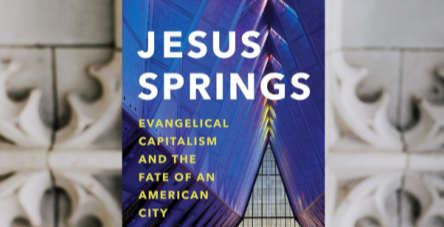In the introduction to his new book, Jesus Springs: Evangelical Capitalism and the Fate of an American City, William J. Schultz writes: “On April 12, 1943, the sun rose on an impressive sight in the Garden of the Gods. This park, located a few miles west of Colorado Springs, was always picturesque; its pinkish-red sandstone formations drew tens of thousands of visitors every year. But that April morning witnessed something unique: 25,000 people gathered at the park’s Gateway Rocks to take part in an Easter sunrise service.”
Login to read more
Sign in or create a free account to access Subscriber-only content.
Topics:
